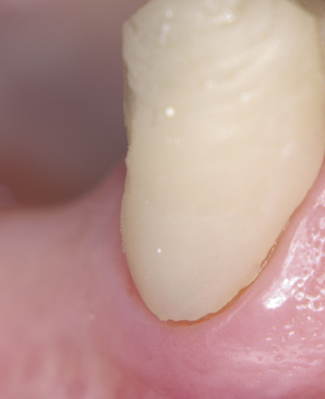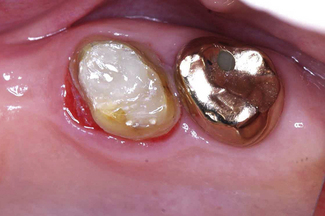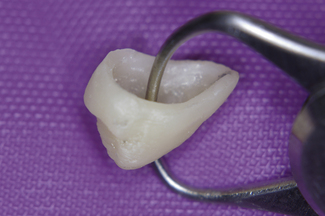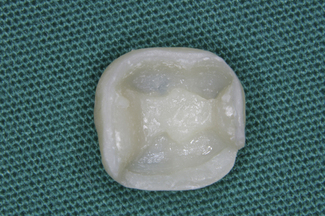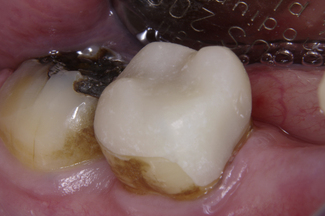Chapter 14 Provisional restorations
Characteristics of a provisional restoration
A provisional restoration should therefore restore the characteristics that have been lost and additionally allow optimum home care. ‘First, do no harm’ also applies to something seemingly as trivial as providing a provisional restoration. Consider the provisional crowns provided in Figures 14.1 and 14.2. The provisional restoration in Figure 14.1 demonstrates an adequate fit cervically and home care should therefore not be compromised. In contrast, the provisional restoration that has been placed on the molar tooth in Figure 14.2 had overhanging margins and during the short time in situ adequate oral hygiene has not been possible and gingival inflammation has ensued.
Specifically, therefore, a provisional restoration must:
Custom-formed resin replica provisional crowns
It is important that the provisional restoration is made before the impression is taken. This is because the provisional restoration can be used to affirm that the tooth preparation characteristics are satisfactory. These include whether sufficient tooth/core has been prepared to accommodate the definitive restoration (Figure 14.3) and other preparation characteristics such as whether the preparation is undercut or not (Figures 14.4 and 14.5). If deficiencies in the preparation are found these can be remedied and the temporary can be relined or remade. An impression of the preparation can now be made with reassurance that the preparation is satisfactory.
Stay updated, free dental videos. Join our Telegram channel

VIDEdental - Online dental courses


